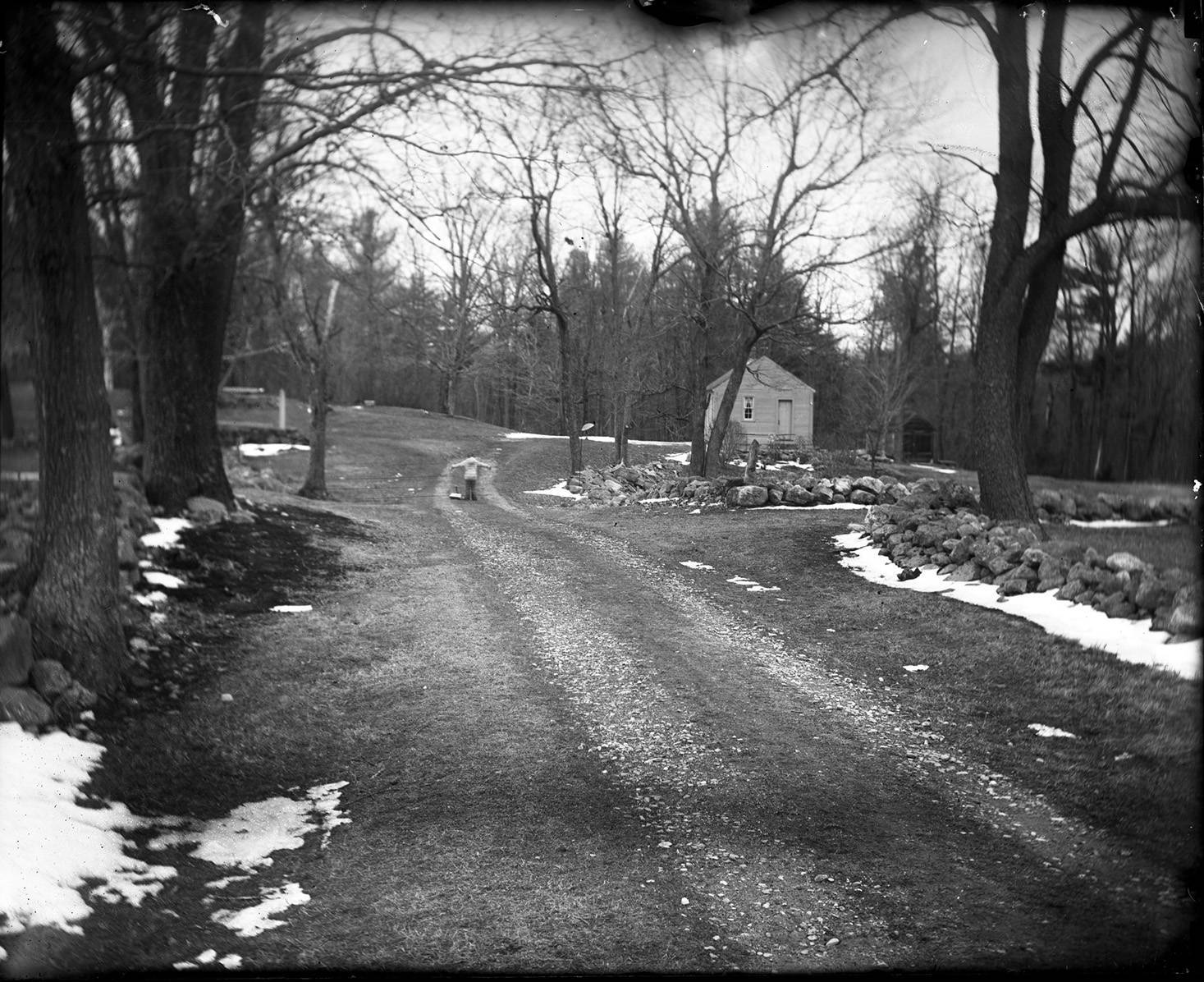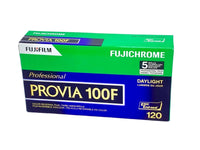Black Friday 2025 has landed at Analogue Wonderland, bringing some of our biggest film photography deals of the year - from discounted film and cameras to money-saving WonderLab processing offers, exclusive bundles, and festive specials available for a limited time only. Grab a great deal while stocks last!

Dry Plates: the 1880s technology for the modern photographer
By Paul McKay
We recently listed J Lane Dry Plates on site, in response to the regular requests from the community for technology that pre-dates the 20th Century ;-) And to understand a little bit more about this range of analogue glass, as well as WHY you would spend time and money trying to replicate processes from 150 years ago, we decided to go straight to source and talk to Mr Jason Lane himself.
Jason! Firstly, tell us about your personal photographic journey - when and how did it start?
Like most people my age, I shot film in the 80s and 90s because that’s what you used to take pictures. At the time, I was one of the “unwashed masses” buying point and shoot cameras in 35mm and then in APS format because size of the camera and the amount of zoom was king. I think my last camera before the digital revolution changed everything was a Canon Elph 2.
I didn’t actually join the digital revolution… I had already been working as an optical engineer out in the California desert, and when all those new digital imaging arrays came out my boss asked me to characterise as many as I could to see what we could use for work. Naturally, I didn’t want to process images at work all day and then do the same thing at home so I kind of got sick of digital as everyone else got excited about it. In addition, I had taken up amateur astronomy and then film astrophotography. For that – which in a real sense blends both my passion for photography and my even deeper passion for optics – I bought my first real film camera: an Olympus OM-1. That was about 2002. Even that early on, prices of film cameras were starting to tank so I could finally afford something like that.
2 ½ hours total exposure on Provia 400F to capture the Orion’s Nebula
Fast forward a few years (met my wife and started raising a family), and I’ve lost the time necessary to stay up all night sitting at a telescope taking pictures. I’m beginning to explore the world of older cameras – medium format Kodak Brownies, Kodak Stereo cameras from the 50s, things like that.
I had begun developing my own film to support astrophotography (think Tech Pan), so in those years 2003-2011 or so as I drifted from astrophotography to general photography, I was just refining my knowledge of the basics of shooting film … and scooping up gear as everyone around me moved to digital and stopped visiting their local film labs. In 2011, I moved to New Hampshire and decided to focus on composition… shooting nothing but a Nikon FE (and then at some point a Nikon FM3a) and a 50mm f/1.8 lens for two years straight. In that time, I developed my shooting style and preferences for certain types of photographs.
Around 2015 I stumbled across internet discussions of making emulsion for dry plates...
I admire the resolve to invest that time with a single camera and lens. It's one of those things that I think many of us intend and then get distracted by a new opportunity or gear. So you stumbled on an internet discussion - that's an inauspicious beginning! Frankly dry plates feels like a niche within a niche...what drew you to this particular part of analogue photography?
I’ve worked through the logic and it’s actually a niche of a niche of a niche of a niche in advanced amateur / professional photography. So, four niches deep. Or niche^4. Dry plates are a niche of alternative process which is a niche of large format as a niche of film photography as part of photography in the world of art. Some would argue it’s only three niches, but I will claim four.
What is the appeal? I think it’s the combination of technical aspects of emulsion making, glass preparation, developing new emulsions, the guidance of photographic experience to tune the characteristics, the very real and essential hands-on techniques of making emulsion and coating plates, the anticipation associated with how many things have to go right to get good results, and then finally the satisfaction of obtaining a good and unique result. A developed glass plate negative is a very tangible object, made more so by knowing what went into making that plate.
What - in your view - separates photographs taken on dry plate from ones on ‘regular’ photographic film? Because film is also a tangible object, is it different or is there something more?
The primitive emulsions of the dry plates that I make have their own distinctive look… just like the photographs of the dry plate era. The response to colour is different. Skies are typically washed out to a saturated white. Dry plates truly form a bridge between wet plate and film, blending the characteristics of those processes together and combining them with its own distinct touch. The extreme fine grain and beautiful (and forgiving) tonality along with the combination of the linearity, the lack of anti-halation, the response that dips well into the ultraviolet to capture a view of the world that modern film doesn’t see… all those things seem to add up to a unique look which has been lost since the early 20th Century. Add to that the tangibility of holding a glass plate… we all love the tangible nature of film. Take that tangibility and magnify it. The glass plate negative demands your attention.
When did you first make a dry plate and was the process as easy/complex as you’d expected?
I made my first dry plate in 2016. To be honest, I didn’t consider how easy or complex the process would be. Engineers don’t think like that. I considered it a technical challenge to take on and complete. Once an engineer see a technical challenge within his/her capability to handle, then very little can be done to divert their focus. I found a recipe which stepped through the process of making emulsion and coating plates, figured out what equipment would be needed, and then just did it.
My first few plates failed in every way imaginable. Frilling, emulsion lifting, a blurry subject, terrible underexposure … When failure happens an engineer goes into troubleshooting mode and works tirelessly until the failures are overcome. By the second batch of plates, however, I was producing really nice results.
The third plate ever
A plate from the second batch
What are the daily challenges of running a dry-plate manufacturing company?
Finding time to sleep. Finding time to take pictures of anything besides the step wedges I use to characterise emulsion. Figuring out the business side of things (regulations and taxes). Working through supply issues. Watch The Empire Strikes Back and listen to Lando Calrissian complain about managing Cloud City… I can now relate. In spite of all that, I am definitely enjoying this adventure.
On behalf of the dry plate community - I'm glad you do!! What has been your proudest moment of the business/project so far?
There have been many proud moments in the two years since I started this venture. The proudest is probably when Steve Lloyd and I knew the Kickstarter campaign for the dry plate holders was going to be successfully funded. That was such an affirmation of the growing interest in dry plate amongst the photography community – most of the backers are people I have talked to, met, or exchanged emails with at some point. The success was such a nice culmination of all the hard work that Steve Lloyd and I had put into getting the design to that point. It was just a great accomplishment. As I look through the list of backers of which many of the names familiar from prior conversations, I’m also proud of that sense of close-knit community that comes from residing in this little niche^4 corner of photography.
Have there been any calamitous moments/funny stories from the business so far?!
Batch O-13 for the ASA 25 J Lane Speed Plates. I labelled it “O-12a” in my notebook and tried to *not* think of it as batch O-13, but the emulsion still knew it was batch #13. Everything that could go wrong when making emulsion that day did. Finally getting it finished and ready to set up, I tripped on the way to my darkroom fridge. That batch is now a splatter stain on the floor of my darkroom. The next day I started batch O-14. Batch O-14 was absolutely beautiful. A gorgeous emulsion. C’est la vie.
How do you cope with the mind-shift between coating dry plates and your ‘day job’ as a high-tech optical engineer? Presumably they need very different skills and ways of working.
The technical aspect, and the scientific bent necessary to make emulsion which is consistent from batch-to-batch – as well as develop new emulsions, does benefit greatly from how I think as an engineer. Aside from that … early in my career a mentor said to make sure I have my priorities straight. Leave work at work when you go home to your family, he’d say. I took that to heart, so I always let work stuff slip away on my drive home. Sometimes I have to bring work home, of course, but for the most part I leave it behind, which benefits me when I have to come tackle this business. It keeps me from feeling overwhelmed most of the time.
What is your personal shooting set-up?
My workhorse is a Graflex Speed Graphic with a 240 f/5.6 Schneider Symmar and a 145mm f/4.7 Heliar. I also have an 8x10 Kodak Century 2D, a Century No. 1 Whole Plate format camera, medium format folders (I love 6x9), and Nikon bodies for 35mm. The FM3a and F6 are my main shooters.
What is the future of J Lane Dry Plates?
I’m actively working to make Pictoriographica my day job, and I won’t get there just coating plates. If you consider that my goal was to resurrect a look that was (almost) lost to time, you might find yourself wondering what other long-lost photographic products could be brought back and replicated today. As part of that, I have brought on a fellow engineer -- a mechanical engineer -- as a partner who is interested in helping me grow the business and really likes designing things. Consider what you would most likely get if you put an optical engineer and a mechanical engineer in a room together and told them to make something. So, aside from the line of plate (and film) holders which Steve Lloyd and I are going to continue developing, I have two other primary product lines I’ll be focusing on as Pictoriographica continues to grow.
Ah how exciting! Making the jump to a film-focused day job is - I can personally attest - a wonderful thing. And also very stressful! But absolutely worth it.
So for people who have been inspired by your story - what would you say to anyone thinking about shooting dry plates for the first time?
Keep in mind that the dry plates are intentionally designed to work like the dry plates of the 19th Century. They will definitely up your photography game just due to all the things you’ll need to pay attention to that you don’t have to when shooting modern film. Colours, atmospheric conditions, time of year, time of day … but don’t worry about that with your first plates.
If your first dry plate is a J Lane Dry Plate: Shoot outdoors in ambient light if you can, metering on a grey card at box speed. Read the info on the back of the box and follow the recommendations. Tray develop under a safelight and develop until you see details in the shadows. Most importantly: Have fun and just get out there and take pictures … load it up in your camera and shoot it. Remember, we are hard-wired to learn more from mistakes than successes.
Now there's a pearl of wisdom that applies to more than photography. Do you have any closing thoughts for people who have read this far?
Two things: First, my biggest kick is out of meeting all the people that I have encountered since starting Pictoriographica. There’s such a wide and interesting variety of folks out there … way different than the folks I’d meet if I were “just” an engineer, but in a good way. People are awesome.
Second … Pictoriographica is more than just me now. I’ve been able to employ a handful of local teenagers who have primarily taken over prepping and coating dry plates so that I can focus on emulsion making, growing the business, and new product development. Hats off to them. They actually prepped and coated most of the dry plates that were sold in the past year, and are a key enabler of future growth.
Ok three things. Analog photography has of course seen a resurgence lately, and every so often you get a reminder of its upswing. Most recently, we had another historic dry plate milestone: Frank Thorpe, who covers Congress for NBC News, shot the first dry plates in probably a century inside the US Capitol building. He used J Lane Speed Plates (ASA 25 Orthochromatic), and captured briefings by US Senators at recent press conferences. The results were amazing. There’s lots of folks out there now shooting dry plates and getting awesome results, and this is just one recent very cool indicator of the resurgence in analog photography.
As always, if you are interested in dry plates and have questions, please do not hesitate to contact me. Visit our website at www.pictoriographica.com, read through the technical info or email me using the contact form on the website. I tend to answer pretty quick and am happy to help.
NB: the link to the technical info on dry plates is found here
Ready to dive in?
Keep Reading
View all
Christmas 2025: Shipping & Opening Hours
Christmas 2025 is fast approaching! To make sure your analogue goodies arrive in time, take note of our last shipping dates, plus opening and operating hours over the festive season. We've got everything you need to gift the magic of film photography this Christmas!

Film Photography Christmas Gift Guide 2025: Analogue Wonderland
Capture the magic of Christmas with film - no filters needed. Our 2025 Film Photography Christmas Gift Guide 2025 is packed with thoughtful presents for every type of shooter, from curious beginners to seasoned photographers. Discover film stocks, cameras, and creative accessories that will make this festive season truly memorable.
Subscribe to our newsletter 💌
Sign up for our newsletter to stay up to date on film photography news, sales and events:
Free Tracked Shipping
On all UK orders over £50
Passion For Film
An unbeatable range and an on-site lab
Our Customers Trust Us
Thousands of independent 5* reviews
All Deliveries are Carbon Neutral
Independently audited and verified by Planet
- Opens in a new window.





